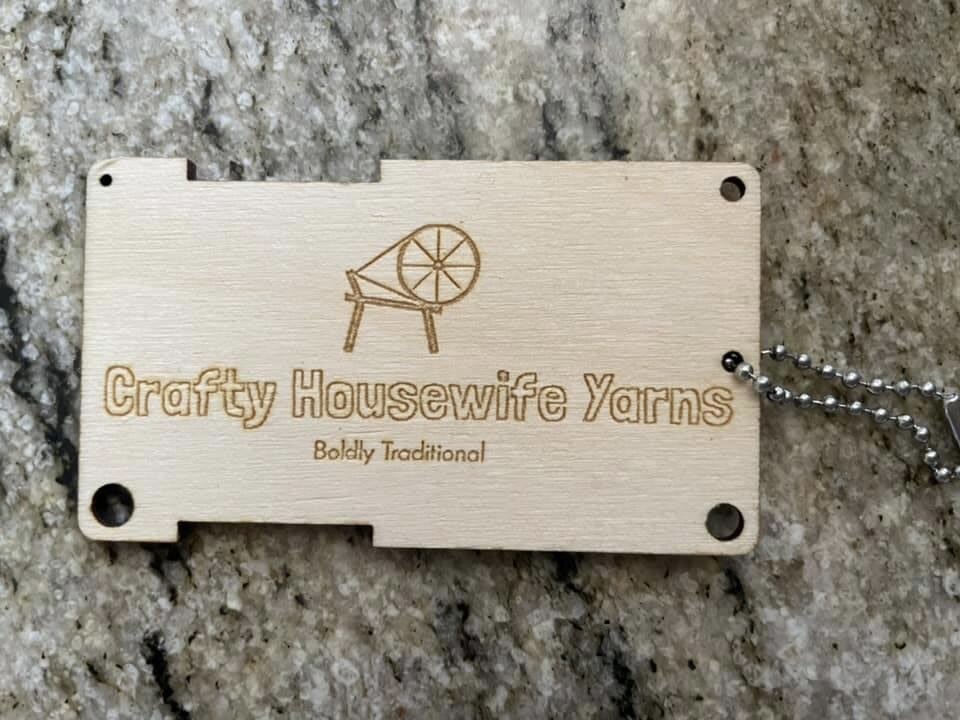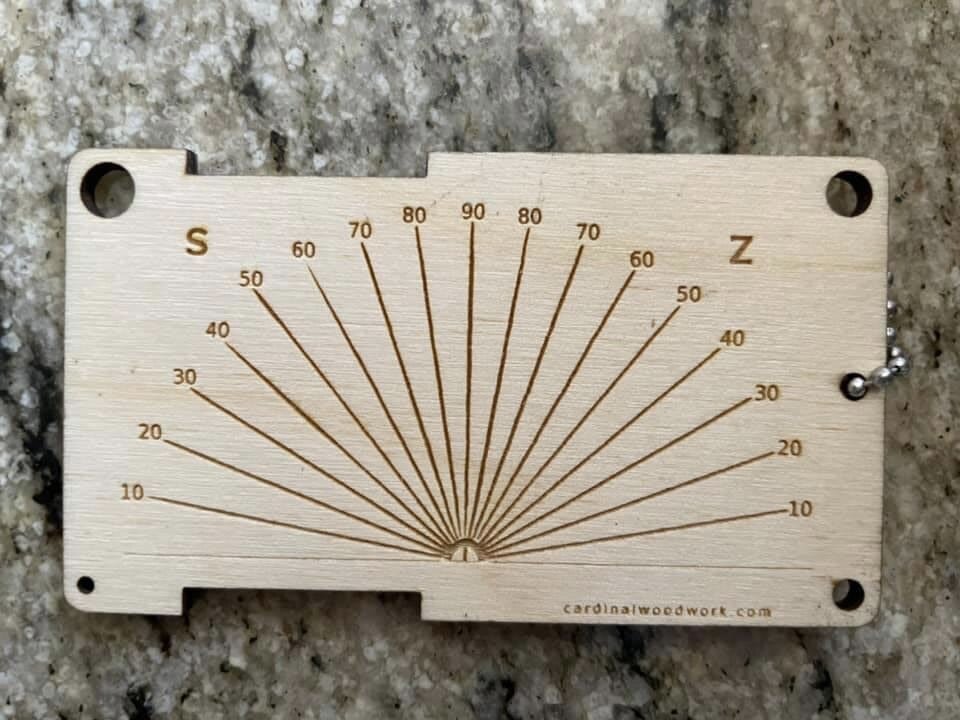How to Use our New Spinner’s Tool
Welcome to the shop, a first for CHY, the brand new spinner’s tool card. These are laser cut from wood and have a very handy chain to keep them attached to your wheel or project bag, and they are multipurpose! Here’s a brief rundown on how to use the cards. For more comprehensive instructions you can Google search Spinner’s Control Cards or how to use a spinner’s tool for many many results and instructions.
Plying angle:
This is very important if you want a perfectly round yarn. As you are plying your yarns you can check the angle between each single to make sure you are holding them properly. The ideal plying angle for a standard yarn is 45 degrees.
Wraps per inch:
These cards have a very handle one inch cutout at the bottom.The simplest way to measure wraps per inch is gently wrap your yarn around as many times will fit in the cut out, being sure not to pull too tightly, as that will flatten your yarn and give you an inaccurate measurement. Then see the chart below to determine the weight of you yarn:
Weight Wraps per Inch (WPI)
Lace 30-40+
Fingering 18-30
Sport 14-18
DK/Light worsted 12-15
Worsted/Aran 9-12
Bulky 6-9
Super Bulky 5-6
Jumbo 1-4
Spin direction:
It happens to the best of us and it’s very easy to spin yarn the wrong direction. Z vs S is very important if you want to ply your yarns. Very simply: Z spun yarn is spun clockwise and S spun yarn is spun counterclockwise. You can very easily tell on a plied yarn by looking to see if the plies form a Z or an S shape. If you want to ply your singles they must have the same spin direction on them: for example, most people choose to Z-spin all their singles. Then you MUST ply them by spinning the opposite direction: Z-spun singles get plied spinning in the S direction, otherwise your singles won’t stay together and you will actually end up with an overspun mess.
Diz holes:
On the 4 corners of the tool we have also included 4 different sizes of holes for dizzing your roving. Some spinners like to use this when pre-drafting to make sure you have a nice, even pre-drafted roving. A diz is also imperative when you are using a hackle in fiber prep (hint, hint, something else is coming ;-) )
It may seem tedious to use a tool and constantly check your yarn, and at first it will be! But this is all about training muscle memory and getting that perfect yarn. A lot of people use the tools when sampling yarns, so you may find yourself using it on a small 10 yard section then feel comfortable turning yourself loose.


